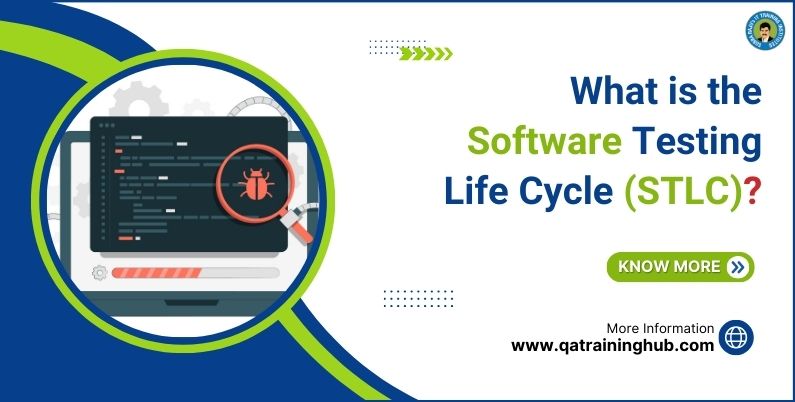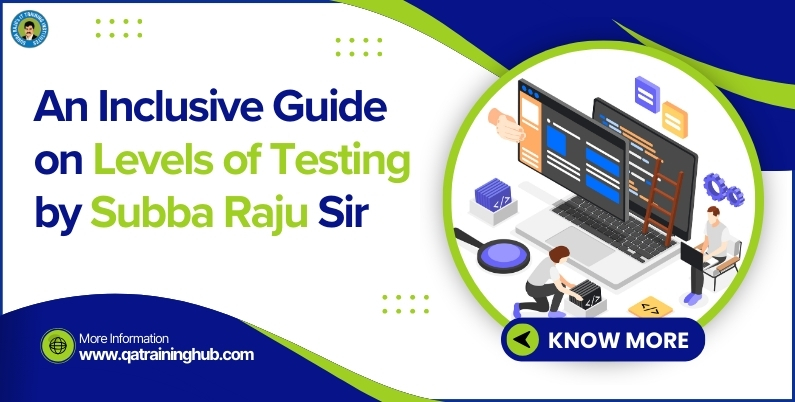
What is the process of Software Testing Life Cycle (STLC)?
In software development, making sure software products are high quality and reliable is very important. This is where the Software Testing Life Cycle (STLC) comes in. STLC is a step-by-step process that guides software testing, ensuring every part of the software is thoroughly tested and meets top quality standards. In this detailed guide, we will look at the What is the Software Testing Life Cycle (STLC)?, different parts of the STLC, why it’s important, its stages, methods, and best practices for successful software testing.
Why is Testing Software Important?
Software testing is important for several reasons. Mainly, it ensures the software is free of bugs, works as expected, and meets user needs. Here are some key reasons why testing software is essential:
1. Ensuring Quality and Reliability
Software testing helps find and fix bugs, making sure the software works well in different situations. This is especially important in critical areas like healthcare, finance, and aerospace, where software failures can be very serious.
2. Enhancing User Experience
High-quality software creates a positive user experience. Software testing finds and fixes usability problems, making sure users can easily and effectively interact with the software.
3. Cost Savings
Finding and fixing bugs during development is much cheaper than fixing them after the software is released. Software testing helps lower maintenance and support costs by catching problems early.
4. Compliance with Standards
Many industries have strict rules for software. Testing ensures the software meets these standards and regulations, helping to avoid legal problems and fines.
5. Building Confidence
Thorough testing builds confidence among everyone involved, including developers, testers, and users. It assures them that the software will work as expected and meet their needs.
What is the Software Testing Life Cycle (STLC)?
The Software Testing Life Cycle (STLC) is a step-by-step process that outlines the different phases of testing software. It defines the tasks and activities for each stage, from planning to execution and closure. The main goal of STLC is to find and fix defects, ensuring the software meets quality standards and user needs.
What is the Role of the Software Testing Life Cycle?
The role of the Software Testing Life Cycle (STLC) is multi-purpose. It provides a structured approach to testing, making sure every part of the software is thoroughly tested. Key roles of STLC include:
1. Defining Testing Scope
The Software Testing Life Cycle (STLC) helps determine the testing scope by identifying what should be tested and what shouldn’t. This ensures that testing focuses on crucial areas, maximizing resource efficiency.
2. Establishing a Testing Framework
It sets up a structure for testing activities by defining processes, methods, and tools to use. This standardization improves the efficiency and effectiveness of testing.
3. Ensuring Comprehensive Coverage
STLC ensures that both functional and non-functional aspects of the software are tested, covering performance, security, usability, compatibility, and more.
4. Facilitating Defect Management
It provides a systematic approach to managing defects, covering identification, reporting, tracking, and resolution. This ensures that defects are handled in an organized and efficient manner.
5. Improving Communication and Collaboration
STLC encourages communication and collaboration among project stakeholders, such as developers, testers, and business analysts, ensuring alignment and shared goals for software quality.
Benefits of the Software Testing Life Cycle
Implementing a structured STLC offers several benefits to the software development process. Here are some of the key advantages:
1. Improved Quality
A well-defined STLC ensures thorough testing of software, resulting in higher quality and dependability. By systematically finding and fixing defects, the software’s overall quality is greatly enhanced.
2. Enhanced Efficiency
STLC simplifies the testing process, improving efficiency and cost-effectiveness. It defines clear processes and methodologies, reducing redundancies and optimizing resource use.
3. Better Risk Management
STLC assists in identifying and reducing risks early in the development process. Through risk-based testing, it ensures that critical issues are resolved before they affect the final product.
4. Increased Customer Satisfaction
Delivering high-quality software that meets user requirements and performs reliably increases customer satisfaction, building trust and loyalty with customers through STLC.
5. Facilitated Compliance
In regulated industries, STLC ensures software compliance with standards and regulations, preventing legal issues and potential fines.
Difference between SDLC and STLC
Although closely related, the Software Development Life Cycle (SDLC) and the Software Testing Life Cycle (STLC) serve different purposes and follow distinct processes.
1. Focus and Scope
- SDLC: It covers the entire development process, from gathering requirements to deployment and maintenance, including all stages of software development.
- STLC: It specifically addresses the testing phase of the development process, starting after requirements are defined and continuing until the software is prepared for release.
2. Phases
- SDLC: It includes stages like requirement analysis, design, implementation, testing, deployment, and maintenance.
- STLC: Includes phases such as requirement analysis, test planning, test case design, environment setup, test execution, defect tracking, and test closure.
3. Deliverables
- SDLC: Delivers the entire software product, which includes code, documentation, and supporting materials.
- STLC: Delivers test plans, test cases, defect reports, and test summary reports.
4. Timing
- SDLC: Starts from the initial concept and continues throughout the entire software lifecycle.
- STLC: Begins after the requirements are defined and focuses on the testing activities up to the release of the software.
Stages of Software Testing Life Cycle
The STLC consists of several stages, each with specific tasks and deliverables. Here is an overview of the key stages:
1. Requirement Analysis
In this initial stage, testers review the software requirements to identify aspects that can be tested. The main activities include:
- Understanding the requirements and identifying any ambiguities.
- Defining the scope of testing.
- Identifying testing priorities and risks.
2. Test Planning
In the test planning stage, a detailed test plan is created. Key activities include:
- Defining the objectives and scope of testing.
- Identifying the resources required, including hardware, software, and personnel.
- Estimating the effort and time required for testing.
- Defining the testing schedule and milestones.
- Identifying the testing tools and techniques to be used.
3. Test Case Design
In this stage, test cases are designed based on the requirements and test plan. Key activities include:
- Creating detailed test cases, including input data, expected results, and execution steps.
- Reviewing and approving test cases.
- Creating test data required for test execution.
4. Environment Setup
In the environment setup stage, the testing environment is prepared. Key activities include:
- Setting up hardware and software required for testing.
- Configuring the test environment to simulate the production environment.
- Installing necessary tools and applications.
5. Test Execution
In this stage, the actual testing is performed. Key activities include:
- Executing the test cases.
- Logging the results and comparing them with expected results.
- Reporting defects and tracking their resolution.
6. Defect Tracking
Defect tracking is a continuous process throughout the test execution stage. Key activities include:
- Logging defects with detailed information.
- Prioritizing and assigning defects for resolution.
- Retesting fixed defects to verify resolution.
- Tracking the status of defects until closure.
7. Test Closure
In the test closure stage, testing activities are wrapped up. Key activities include:
- Reviewing the criteria for when tests are finished.
- Writing down test results and making a summary report.
- Holding a meeting after testing to talk about what we’ve learned.
- Saving test materials for later use.
Methodologies of Software Testing Life Cycle
Various methods can be used in the Software Testing Life Cycle (STLC) to ensure thorough and effective testing. Some of the typical methods include:
1. Waterfall Model
In the Waterfall model, each step of the Software Testing Life Cycle (STLC) is finished one after the other before proceeding to the next step. This approach is direct but can be rigid because it doesn’t adapt well to changes.
2. V-Model
The V-Model, also called the Verification and Validation model, expands on the Waterfall model. It focuses on testing activities running in parallel with development, ensuring testing is integrated into every stage of the development process.
3. Agile Model
In the Agile model, testing happens in small cycles throughout the development process. Agile stresses teamwork, adaptability, and ongoing feedback, making it ideal for dynamic and fast-moving development settings.
4. Spiral Model
The Spiral model combines iterative development with risk management. Testing activities are conducted in multiple iterations, with each iteration addressing specific risks and improving the software step by step.
5. Continuous Testing
Continuous testing is a crucial component of Continuous Integration/Continuous Deployment (CI/CD) pipelines. It includes automated testing throughout all stages of development, ensuring that issues are identified and fixed promptly.
What are the Entry and Exit Criteria in STLC?
Entry and exit criteria establish the requirements that must be fulfilled before moving to the next stage of the STLC. They ensure that each stage is finished properly and that the software is prepared for the next testing phase.
Entry Criteria
Entry criteria are the conditions that need to be met before beginning a specific stage. Typical entry criteria include:
- Availability of requirements and specifications.
- Approved test plan and test cases.
- Configured test environment.
- Availability of necessary resources (tools, personnel, etc.).
Exit Criteria
Exit criteria specify when a stage of testing is considered complete and ready to exit. Common exit criteria include:
- All planned test cases are finished.
- Specific test coverage goals are reached (e.g., code and requirement coverage).
- Defects are closed within acceptable limits.
- Stakeholders approve test results and sign off.
How Test Automation Fits in the STLC?
Test automation is crucial for improving the efficiency and effectiveness of the Software Testing Life Cycle (STLC). It uses automated tools and scripts to run test cases, verify outcomes, and report issues. Here’s how test automation integrates into the STLC:
1. Test Planning
During test planning, automation feasibility analysis is conducted to identify test cases suitable for automation. Criteria such as test case complexity, frequency of execution, and ROI are considered.
2. Test Case Design
Automation engineers create automated test scripts based on predefined test cases. They use automation tools and frameworks that work with the application being tested.
3. Test Execution
During the test execution phase, automated test scripts are run. This lowers manual work and speeds up testing, particularly for regression and repetitive tests.
4. Defect Tracking
Automated tests produce detailed logs and reports, which help track and manage defects. They can be connected with defect tracking tools to streamline how defects are handled and resolved.
5. Continuous Integration
In CI/CD pipelines, automated tests are included in the build process. This guarantees that new code changes undergo automatic testing, giving prompt feedback to developers and ensuring the quality of the software.
6. Maintenance and Scalability
Automated tests are simpler to maintain and expand compared to manual tests. Changes to test scripts can be swiftly implemented to adapt to alterations in the application or requirements.
Possible Variations in the Standard STLC Process
While the typical Software Testing Life Cycle (STLC) offers a structured framework, variations can arise depending on project requirements:
- Agile STLC: Integrates testing into each iteration or sprint, focusing on flexibility and quick feedback.
- DevOps STLC: It integrates continuous testing into CI/CD pipelines to speed up deployment and provide instant feedback.
- Exploratory Testing: It combines learning, test design, and execution simultaneously to uncover complex issues.
- Risk-Based Testing: It focuses testing efforts on high-risk areas, prioritizing based on risk analysis.
- Model-Based Testing: It utilizes models to automatically generate test cases, ensuring thorough coverage.
Best Practices for Successful STLC
Implementing best practices ensures a successful STLC:
- Early Testing: Detect defects early in the SDLC to reduce costs.
- Clear Objectives: Define measurable testing goals.
- Collaboration: Encourage communication among all stakeholders.
- Continuous Feedback: Incorporate feedback throughout the process.
- Automation: Automate repetitive tests to improve efficiency.
- Risk-Based Testing: Focus on testing high-risk areas.
- Metrics: Monitor progress by tracking key metrics.
- Continuous Improvement: Promote continuous learning and improvement.
Conclusion:
In conclusion, Understanding the What is the Software Testing Life Cycle (STLC)? is crucial for organizations dedicated to delivering high-quality software products. The STLC provides a structured framework that ensures comprehensive testing, identifies defects, and validates against user requirements. By focusing on early testing, clear goals, collaboration, continuous feedback, automation, risk-based testing, metrics monitoring, and ongoing improvement,Teams can make their testing processes more efficient and achieve successful outcomes.
At QA Training Hub, we highlight the significance of mastering What is the Software Testing Life Cycle (STLC)? to empower testers and organizations with the skills and knowledge necessary to navigate the complexities of modern software development. Whether you’re using Agile or DevOps methodologies, it’s essential to understand the different approaches to the STLC process. This understanding helps in adapting to various project requirements and industry standards.
By adopting best practices and managing risks effectively through automation, teams can boost their testing efficiency, reduce costs, and elevate software quality. This approach ensures software not only meets user expectations but also builds stakeholder confidence, ensuring dependability, security, and compliance.
Come join QA Training Hub today and start learning about What is the Software Testing Life Cycle (STLC)? and Be prepared to handle the challenges of modern software testing. Improve your skills, bring innovation to your work, and help create strong, reliable software. Our courses will enhance your abilities and advance your career in the ever-evolving field of software quality assurance.
FAQ’s:
Q: What is the difference between STLC and SDLC?
A: STLC focuses on testing, while SDLC encompasses the entire development process from concept to deployment.
Q: How does Agile methodology impact the STLC?
A: Agile integrates testing into each iteration, promoting flexibility and continuous feedback.
Q: What are the key challenges in implementing STLC?
A: Challenges include resource constraints, evolving requirements, and communication gaps.
Q: How can automation benefit the STLC?
A: Automation increases efficiency, reduces manual effort, and improves test coverage.
Q: What role does risk management play in the STLC?
A: Risk management prioritizes testing efforts based on potential defects’ likelihood and impact.







